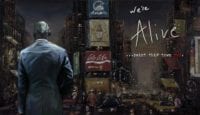CW: This essay includes graphic images and discussion of suicide. If you are or someone you know may be at risk of taking their own life, please call the Suicide Prevention Hotline at 1-800-273-8255.
“Ghosts won’t kill people…”
I’d like to think that I don’t believe in ghosts.
But I might have in 2009. Or at least I was probably more disposed to the idea of something being there. Whatever my exact position was on the metaphysical, suffice it to say that I was afraid of horror films that dealt with ghosts. I was not afraid on a mental level; this was more physiological—sweaty palms, heart palpitations, the need to run and hide. There’s a story my boyfriend likes to tell that perfectly exemplifies this: during a bit of late-night channel surfing, we stumbled upon The Haunted (2009–2011), Animal Planet’s series that focused on ghost hunting episodes involving animals. This particular episode (S1E02: “Murder at the Black Horse & Coven of the Cat”) centered on the ghostly encounters that someone’s pets were having. Rather than laugh at the overly contrived nature of the episode, I left the room and refused to come back in until he changed the channel. Yeah, it was that bad.
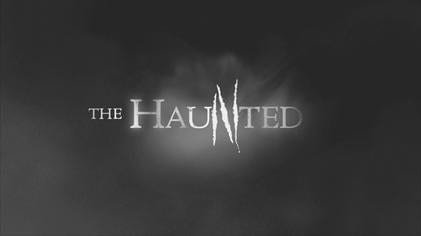
It is still unclear to me how (or why) I thought it would be a good idea to watch Kiyoshi Kurosawa’s Kairo (2001; also known as Pulse, which is the title of the 2006 American remake). I can’t recall reading the description on the Netflix disc envelope, but it had to have mentioned the film contained ghosts. The synopsis of Kairo on the Netflix DVD site reads as follows:
Set in Tokyo, this disturbing thriller follows three people facing a mystery that defies temporal explanation as a young man named Taguchi kills himself and later appears as a spectral computer image. Soon more of the city’s denizens vanish in a similar fashion, with their ghostly souls turning up on the same Internet site. Can Taguchi’s co-worker (Kumiko Aso), a college slacker (Haruhiko Kato) and a computer whiz (Koyuki) solve the conundrum?
I had seen the American remakes of other J-horror films like The Ring (2002) and The Grudge (2004). I knew what to expect: lithe ghostly figures with dark hair hiding their monstrous faces, just waiting to grab you and contort your body into some unnatural shape. I was prepared for this, or so I kept telling myself.
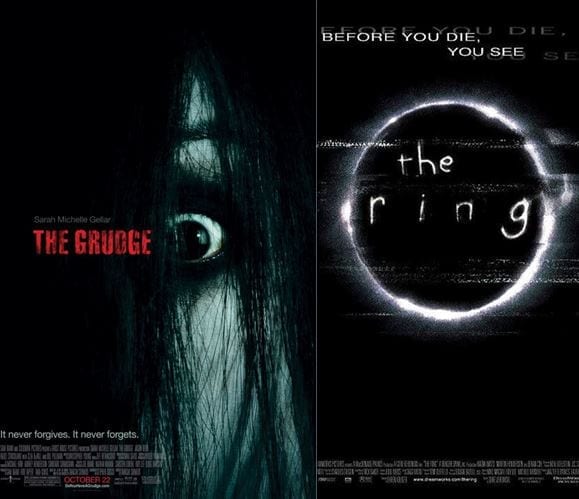
Reader, I was not prepared for what I saw.
Michi, a young woman who works at a greenhouse, goes to her friend Taguchi’s apartment to find a disk he’s been working on. After she briefly speaks to him, he goes into the next room and, quite calmly, hangs himself. I’d seen suicide-by-hanging depicted in films before, but this was something else. His neck was stretched as if it were made of silly putty. And that’s only in the first nine minutes of the film.
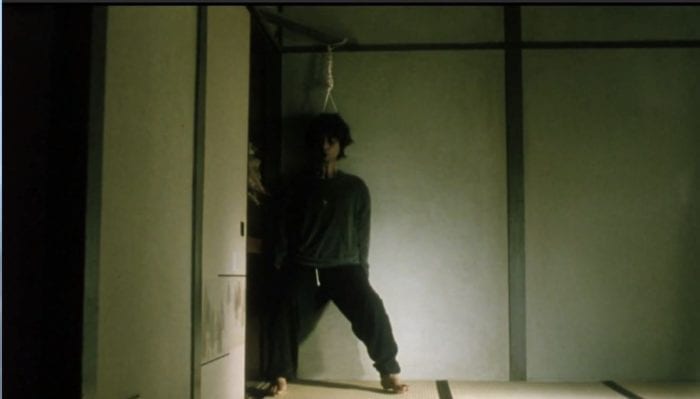
After Michi and her other co-workers, Junko (Kurume Arisaka) and Yabe (Masatoshi Matsuo) find an image on the disk showing Taguchi standing creepily in front of his computer, the second storyline begins, as we see Ryosuke Kawashima (Haruhiko Kato) setting up the Internet at his home for the first time.

When his dialup modem connects, we immediately see a series of live webcam feeds. He confusingly clicks through several images before getting to a black screen, which poses a single question: “Would you like to meet a ghost?”
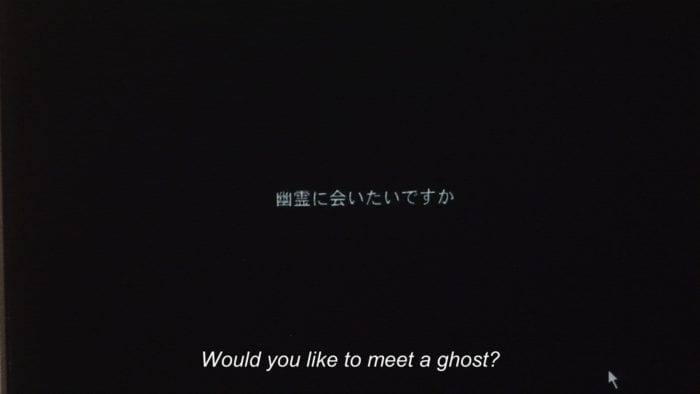
That’s kind of you to ask, but, uh, no thank you. I’m good. And Ryosuke responds as anyone might have: he frantically shuts off his computer. Once he’s asleep, though, it turns itself back on and connects to the Internet on its own. This time, the screen shows an image of a man in a red shirt sitting in the middle of a room with a black bag over his head, with large Japanese characters scrawled on the wall behind him. Ryosuke wakes up, scrambles to turn off the computer again, and later goes to his college’s computer lab to ask about how computers and the Internet work. (As most films about the Internet in the 1990s and early 2000 tell us, hackers might have something to do with it). With all this exposition and character-building, my nerves must have been calmed. But it didn’t last.
Returning to the first storyline, while at work, Yabe receives a call on his cell phone from a haunting voice that repeats tasukete (“help”), paired with a text message showing the same image of Taguchi that was found on the disk. After rushing over to Taguchi’s apartment and seeing Taguchi’s “death stain” on the wall and a piece of paper with the phrase “The Forbidden Room” on it, Yabe is somehow led to another building. There he finds a door sealed shut with red construction tape, which he removes. Once inside, he finds a barren cement room with frenzied red paint on the wall above a single black couch. Oh, and A GHOST WOMAN IS STANDING IN THE CORNER.

I know what’s coming. I try to tell my body that I have seen this sort of thing before, but it’s no use. I cannot slow my heart rate and my palms are already clammy.
The ghost begins to walk slowly towards Yabe, contorting her body in strange ways as she moves closer and closer to him. At this point, I don’t know how my eyes are still open. Yabe falls and clambers behind the couch. That’s when it starts: the haunting music. The pale hands grip the top of the couch, indicating to us that she is going to look behind it. The ghost is slowly about to reveal herself and then…
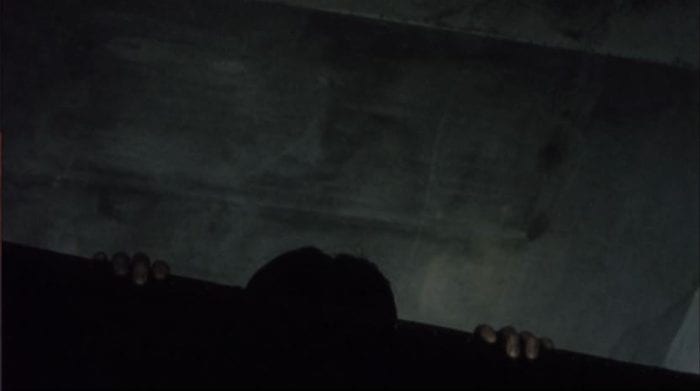
…I can’t tell you what happens after that because, being so stricken with fear, I refused to open my eyes. The image above is about as far as I got before my hands covered my face. As for the rest of Kairo, I didn’t care what happened—I was done. To this day, in terms of sheer terror, it is the film that has scared me the most. I never wanted to return to it.
And yet, sometimes, events in our lives encourage us to rethink our opinions and expectations—about ghosts, about fear, about loss. That’s what moving into a possibly haunted apartment did for me.
“Everyone dies, therefore there’s no logical reason for ghosts not to exist.”
It started with the mail—and not just those mail-order catalogs that advertised lifestyles I could never afford. The bank notifications and statements are what clued me in to something being off. The more I left sticky notes that stated “Return to Sender – Person no longer at this address,” the more the mail kept coming. I didn’t give it too much thought, though. After all, we had barely lived in the apartment for more than a few months. This sort of thing happens, I imagined. People forget to change their addresses all the time…right?
It hadn’t been at the forefront of my mind when I ran into my neighbor in the middle of October 2016. We briefly introduced ourselves, sharing complaints about our atrociously paved parking lot and the inconsistency of the mail delivery. The mail? I remarked instantly, “We keep receiving mail for the previous tenant. It seems like important mail, too. Do you know what happened to them? I mean, where they went?” My neighbor’s demeanor changed immediately.
“The leasing office, uh, they didn’t tell you?” the neighbor replied almost nervously.
Tell me what?
In a hushed tone, she said, “They killed themselves…and found their body in the apartment. No one knows how long they’d been there.”
Looking back, I can’t remember my first reaction—was it fear? Sadness? Both? What I do remember is that after the initial shock I quipped, “This is how horror movies start! We’re living inside a horror movie right now!” The neighbor laughed, and we exchanged a few more frivolous words before she told me the rest of the story.[1] I can only say that issues of loneliness and mental health were prevalent, and the more I heard, the more the weight of those words crushed me. I must have stood there with my mouth agape for some time before my neighbor asked if I was okay. Yes, I think so, I must have said. Why would I tell a stranger all the terrible thoughts running through my head? What good would it do to share my own struggles with depression and suicidal ideation with someone I just met?
After returning to the apartment, I sat on the couch for what seemed like hours, staring off into the distance and thinking about where it might have happened. My place is small, so no matter where there wasn’t the possibility to avoid it. I waited until my boyfriend came home to tell him—no sense in possibly upsetting him at work. Besides, I didn’t know how to vocalize it. It frightened me, honestly. And what could I do at this point? We live in a state where there is no legal requirement for the rental company to disclose that sort of information. He took the news much better than I did — his quiet acknowledgment of the tragedy transformed into the real concern—my mental health.
I never felt the previous tenant’s “presence” or noticed any poltergeist activity. But I wondered what it would mean to continue to work from home, alone. Writing a dissertation is already an incredibly solitary task, but to do so knowing someone committed suicide here felt different. It unnerved me. I felt their loneliness.
That’s why I didn’t want to go to the dinner that old friends had planned later that week. It was almost too much to bear, to have to disclose why I was anxious, morose even. But it will be good for you, my boyfriend said. These people care about you. He had a point, so I relented. Little did I know that the situation would take an unexpected turn.
I hadn’t even been there an hour before it spilled out. I felt silly, even selfish, for investing so much of myself into someone else’s story. “We could do a cleansing,” said one of my friends, someone I hadn’t seen in almost a year. “And since it’s so close to Samhain, the veil between the worlds will be thin, which will help them cross over more easily.” Are you joking? “No, I’m not joking,” she replied. “I’d love to help you do this. We’ll just need to get a few things beforehand.”
As I said at the outset of this piece, I’d like to think that I don’t believe in ghosts. But what happens when you watch a Japanese ghost story during the witching hour? Well, I suppose all bets are off then. I tell myself that I am a rational-minded person whose apartment does not need a “cleansing.”
But I bought the sage and black sand anyway. I prepared the pots and utensils that we would bang to help remove the energy. With stockpot and wooden spoon in hand, I handed a saucepan to my boyfriend, the more skeptical of the two of us. “I’ll just bang on yours,” he replied. Walking all 750 feet of our apartment, it was a sight to behold: there we were, slowly walking the perimeter of a loft apartment, banging a stockpot with a wooden spoon and plastic ladle, calling out and encouraging the previous tenant to move on. After the five-minute walk, my friend and I stepped outside. Pointing upward at a flock of birds flying overhead, she remarked, “Look!”—as if to say with them went their spirit. We chatted for a bit, and then she left.
Later that day, after unpacking what happened, I realized that I saw the episode not through a lens of derision, but as emblematic of friendship, of love and community. She cared enough about me to try to set my mind at ease about the situation, in her own way. Whether I shared her views simply didn’t matter. She took it upon herself to demonstrate her care and concern for my well-being in a manner that made sense to her. I am deeply grateful for that.
Perhaps because of the pathos involved, I never thought about the situation in my apartment as a horror movie (beyond the passing comment to my neighbor). It didn’t seem to cross my mind. That is, until last month.
“Even if there’s no one else, it doesn’t matter. We are both definitely here.”
As I said, I never wanted to return to Kairo. Under any circumstances.
That’s why when the @mutanttheater announced Kairo as the first movie the community would be watching on July 19th, I told myself I would sit this one out, even though it meant not participating in something that I had looked forward to every week since the end of Shudder’s first season of The Last Drive-In with Joe Bob Briggs in May 2019.[2] Old and new fans alike (lovingly known as “Drive-in Mutants”) had come to cherish their Friday nights with Joe Bob, which consisted of not only watching the curated horror films on Shudder but also affectionately riffing on the material. One of the many things that kept the community together during the season (and the previous marathons) was the use of social media. This was due in no small part to Darcy (@kinky_horror), the new mail girl who has a penchant for prolifically tweeting during the episodes: tweets, likes, retweets, replies, she does it all.[3]

After the season was over, several different “mutants” devised ways to keep the community alive, especially through the media that most had access to already: Shudder and Twitter. One such group unified under a particular Twitter handle and hashtag that pointed to our communal identity: @mutanttheater and #mutanttheater.[4] Started in June 2019 and run by a collective of welcoming and generous fans, they followed a format similar to the show, choosing two films every Friday that the community can watch on Shudder while they live-tweet their reactions (a member of the collective selects the first film; the second is voted on by the whole community). Someone in the collective chose Kairo, so it’s not as if I could have lobbied on behalf of one of the other four options the community can vote for. Having decided earlier in the week to miss the first film, I was nowhere near my computer at 9 p.m. that Friday night.

Yet, for reasons unknown at the time, around 9:30 p.m., I changed my mind.

Even forty minutes behind everyone, I started Kairo from the beginning. This time around, it seemed dated. I laughed to myself, thinking, “How could this scare me so much?” But I knew why, and I waited for my heart to begin racing in anticipation for that scene.
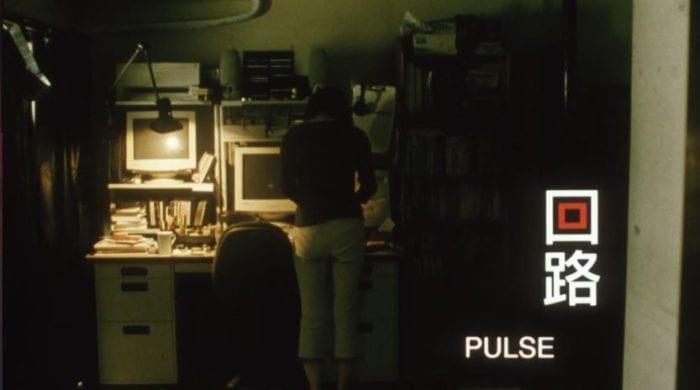
Something else happened instead. I saw something I didn’t notice before. Rather, I felt something I didn’t feel before. It wasn’t fear: it was loneliness. Even in the first 16 minutes of the film, this theme is palpable. How did I miss this?[5]
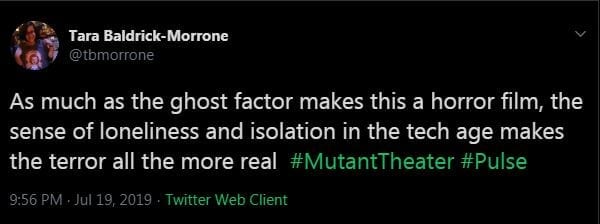
Because I started to view the film through this lens before Yabe’s encounter with the ghost, I made up my mind that I would look this time. I expected to see someone like Kayako Sakei, the ghost woman from The Grudge (played by Takako Fuji in both the 2002 Japanese original and the 2004 American remake).

The 2009 version of me had this in my mind’s eye before I refused to watch the rest of the film. What I saw defied my expectations:
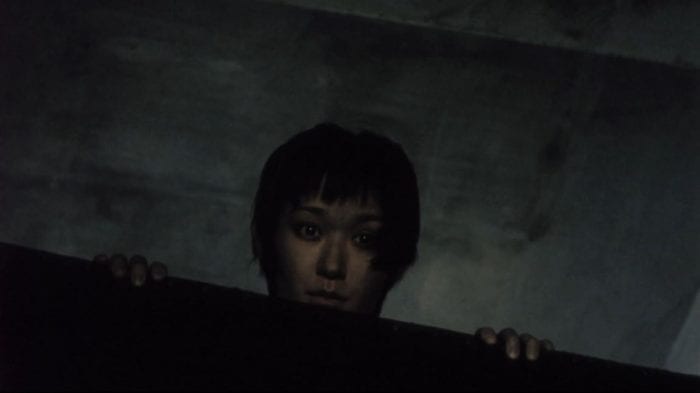
That’s it. That’s the face we see. A sad-looking woman, nothing more—that is, at least for us. We are left to wonder what Yabe sees, as in the next shot he screams in terror. With the preconceived image vanquished, I could see it for what it was: a medium revealing Kairo as a story about the horrors of isolation rather than a conventional ghost story.
That’s not all that occurred to me. After Taguchi’s suicide and the effect it has on Yabe, it clicked in my mind that, in some sense, this was not unlike the story of my apartment’s previous tenant. I consider myself susceptible to the contagion of loneliness and isolation in a story such as this one. Though our lives were greatly different, I empathized with the tenant’s state of mind. No matter the circumstance, one can still feel lonely (whether in a crowded room or a committed relationship). Kairo tells us as much: after explaining the computer program of moving dots to Ryosuke, Harue (Koyuki) states almost sorrowfully that “people don’t really connect, you know. Like those dots simulating humans. We all live totally separately.”
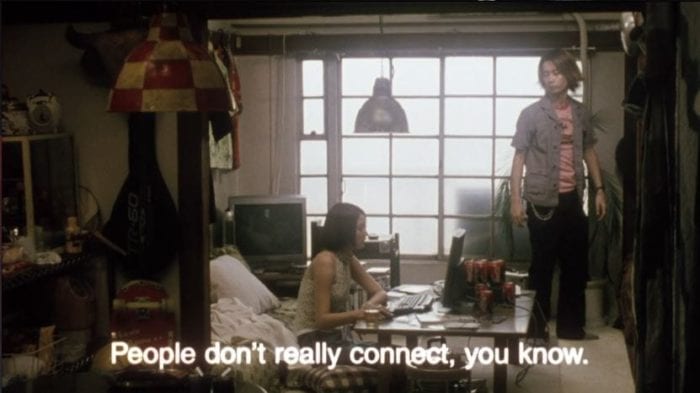
We “might be all alone in death, too,” Harue tells Ryosuke in another scene. Turning on several computer monitors that display different people sitting alone in their homes, she continues: “Are they really alive? How are they different from ghosts? In fact, ghosts and people are the same, whether they’re dead or alive.” For Harue, the parity between the living and the dead exists in their isolation, as they will “try to make people immortal by quietly trapping them in their own loneliness.”
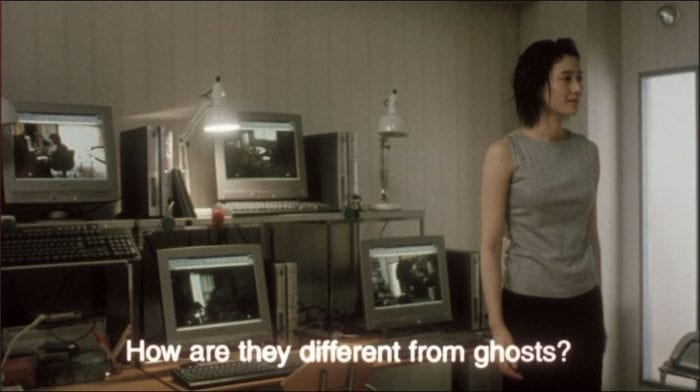
Ryosuke retorts defiantly, “What have ghosts got to do with us?… All this about ghosts, but I won’t believe in them, even if I see one. But I do know that I’m definitely alive, and so are you, Harue.” This reminder that they are indeed still alive provides the counterpoint to Harue’s lament: Ryosuke later takes this a step further by proposing that they “live together.” “That way,” he says, “we can always be together. If we keep living alone, we’ll just get worse and worse because we’re weak. We’ll balance each other out. How about living that way? Will you try it with me?” But it is already too late. Harue has been overtaken by a ghost, exclaiming that she is “not alone.”

To say that the Internet has produced (or exacerbated) feelings of isolation and loneliness in its users is neither novel nor controversial. As early as the summer of 2000, Norman Nie, the director of Stanford University’s Stanford Institute for the Quantitative Study of Society (SIQSS), gave a solemn warning: “The Internet could be the ultimate isolating technology that further reduces our participation in communities—even more than did automobiles and television.”[6] Many studies gauging feelings of loneliness and isolation have been done since then, often producing inconclusive results.
That Kairo itself bears out many of these conclusions (most of the more negative ones, at least) shouldn’t be surprising. It is a horror film, after all. But that’s just it: though the film itself depicts the horrors of isolation and loneliness, I only watched it again because of my community. Though I could understand the agony and sorrow of Taguchi, of Harue, of Yabe, I might no longer claim myself as one of them. That there are people who love horror films out there, in the world, was not beyond any of us. But to find each other took the work of community organizers like Joe Bob, Darcy, and the @mutanttheater, those people who, like Ryosuke, remind us that we are “definitely alive.”[7]
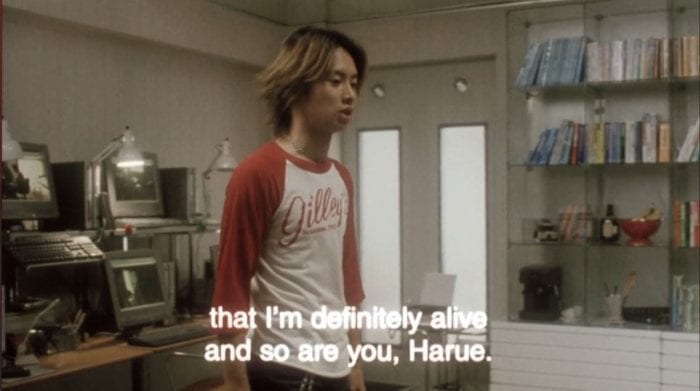
[1] I feel compelled at this point to tell the reader that I am omitting details from the previous tenant’s story because, in many ways, it is not mine to tell.
[2] I shouldn’t move on without first mentioning that the inimitable Laura Beerman, one of 25YL’s own, writes the blog for The Last Drive-In.
[3] For those interested, some relevant hashtags include #MutantFam, #TheLastDriveIn, #TheDriveInWillNeverDie, and the movie titles of each episode; other relevant Twitter handles include @therealjoebob and @Shudder.
[4] @mutanttheater is jointly managed by Dave (@CoachDRitch), Kim (@NoKimOnlyZuul), Chris (@Boobafett69), Shonna (@kilznite0411), Raymond (@Xenon1313_), Robin (@CreepiesRobin), and Justin (@MrJustin1985). I thank them for sharing the community’s origin story.
[5] I may have missed this key theme, but others certainly haven’t. For Arrow Video’s special edition Blu-ray release of Pulse, included in the extra features is an interview with Adam Wingard and Simon Barrett (Blair Witch, You’re Next) titled “The Horror of Isolation.”
[6] “Does the Internet Lead to Isolation?” Stanford Magazine, May/June 2000.
[7] For another great take on isolation in horror, see Kelly McNeely’s “I Think We’re Alone Now: A Cultural History of Isolation in Horror.”


